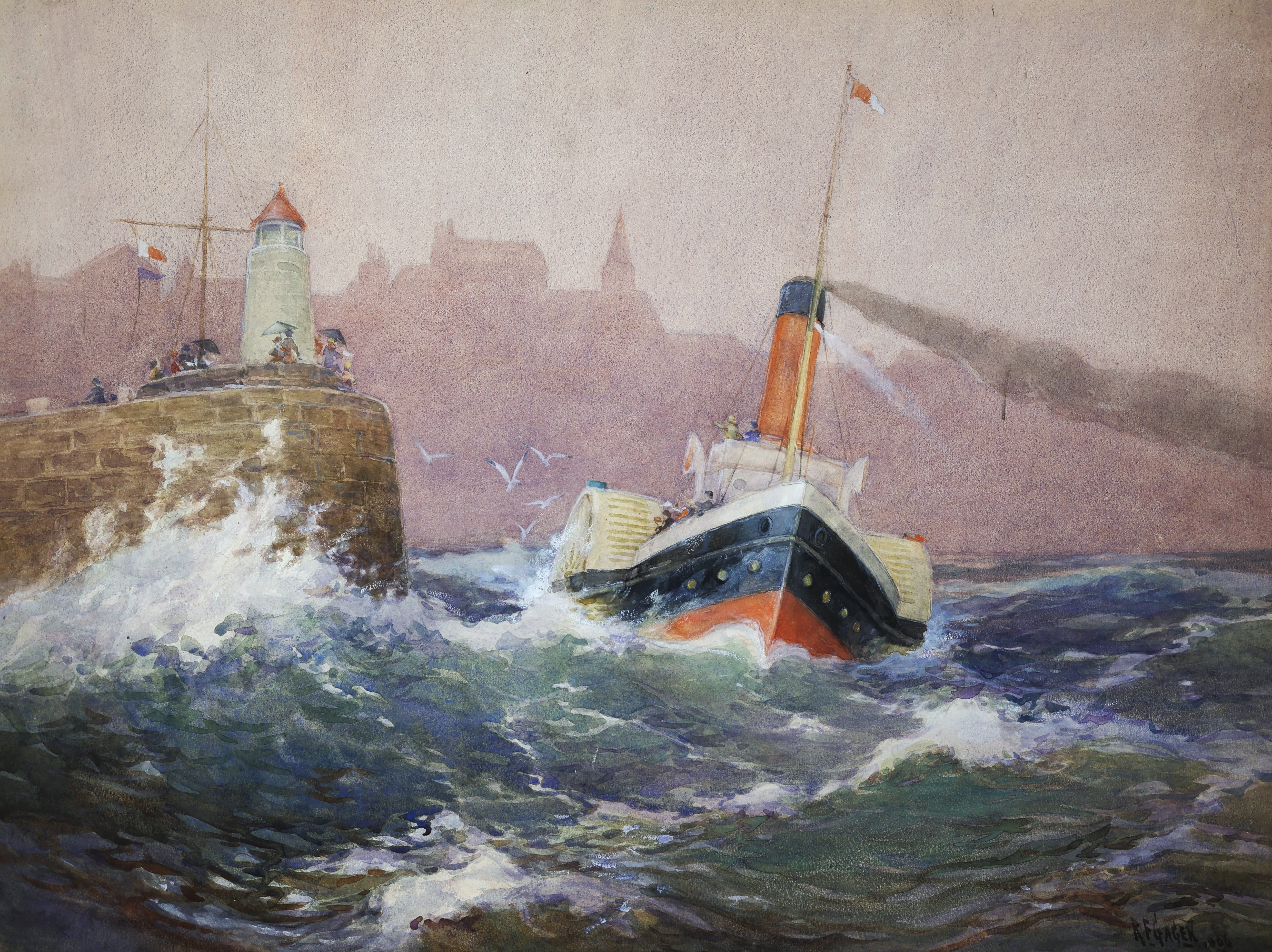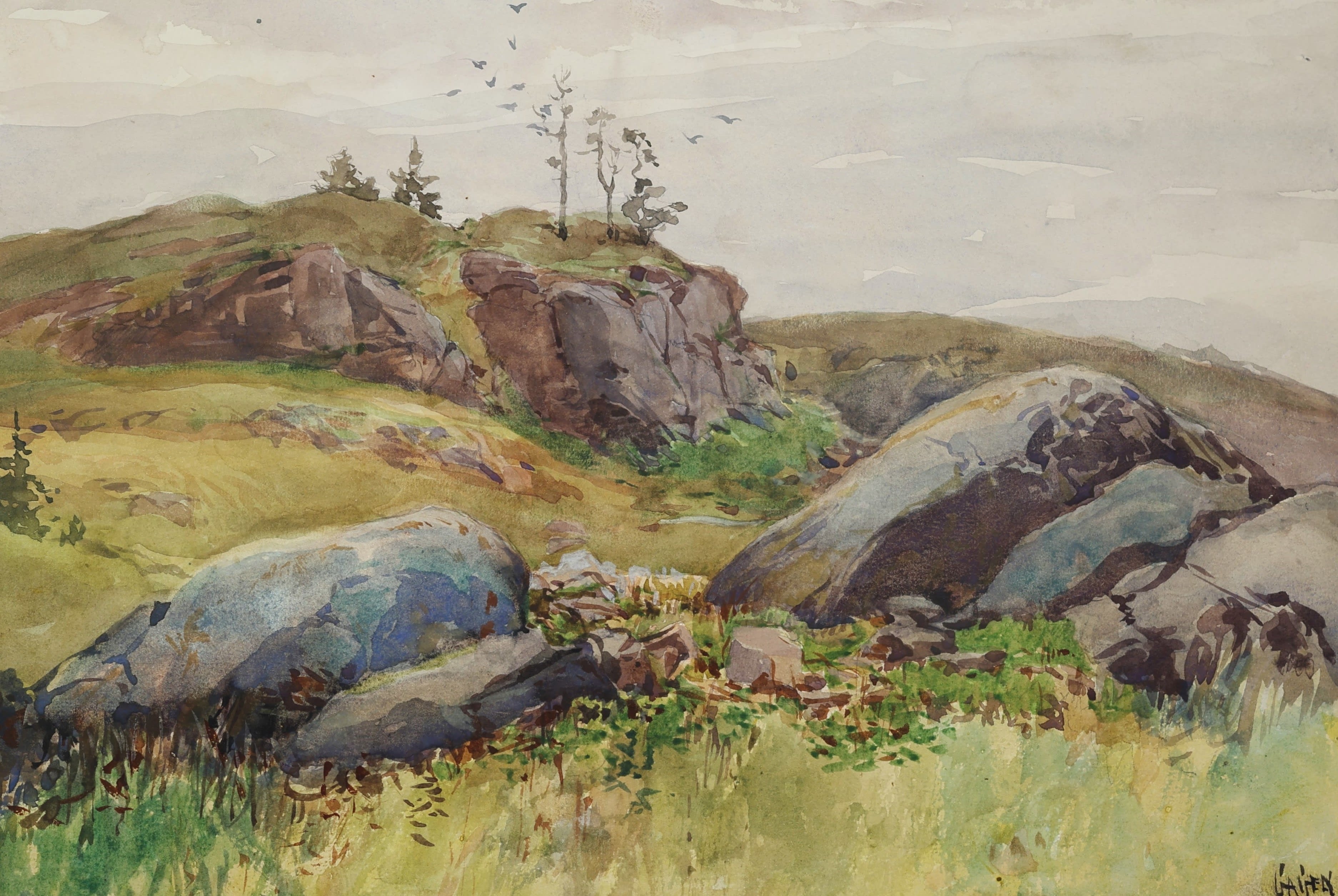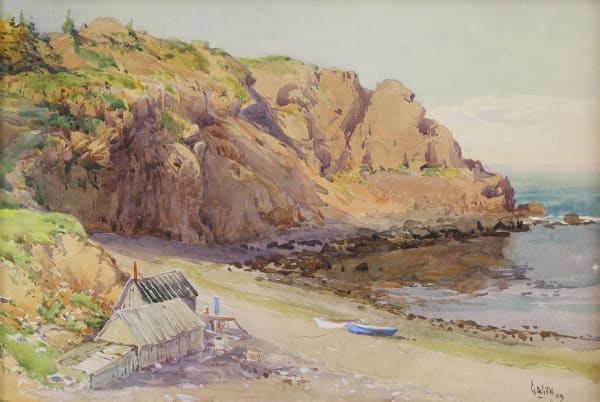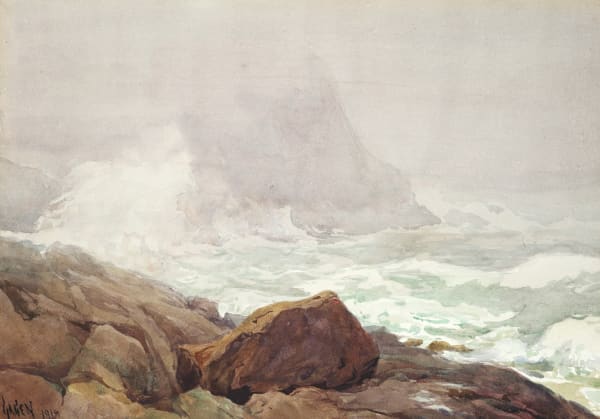Robert Ford Gagen (May 10, 1847-March 2, 1926), known as R. F. Gagen was a pioneering Canadian painter renowned for his seascapes and landscapes, earning him the accolade of being an institution within the Ontario Society of Artists. Born in London, England, Gagen immigrated to Canada with his family in 1862, settling in Seaforth, Ontario. His artistic education commenced under the guidance of William Nicoll Cresswell, R.A., who recognized his talent and provided invaluable instruction and materials.

Robert Ford Gagen; Off Folkstone
In Toronto, Gagen further honed his skills under the tutelage of George Gilbert and John Arthur Fraser, ultimately joining Notman and Fraser's art department, where he specialized in painting watercolour portraits and miniatures. During his nine-year tenure, he emerged as a noted landscape artist, drawing inspiration from the vast Canadian terrain, from the Rockies to the Atlantic.

Robert Ford Gagen; Lake of the Bays
Gagen's oeuvre was characterized by his masterful portrayal of the sea, capturing the essence of maritime life with a keen eye for detail and light. He frequently journeyed to coastal regions like the Bay of Fundy to gather sketches and material for his studio work, resulting in timeless paintings depicting fishing boats, rolling surf, and the interplay of sunlight and shadow on rocky shores.

Robert Ford Gagen; Rocks
A pivotal figure in Canadian art, Gagen co-founded the Ontario Society of Artists in 1872 and served as its long-term secretary. He was also instrumental in the establishment of the Royal Canadian Academy, becoming an Associate Charter Member in 1880 and attaining full membership in 1915. Beyond his artistic endeavours, Gagen held significant roles in cultural organizations, including serving as president of the Arts and Letters Club of Toronto and as Commissioner of Fine Arts for the Canadian National Exhibition.

Robert Ford Gagen; Shoreline Path
Gagen's contributions were widely recognized, earning him accolades such as honourable mention at the Pan-American Exhibition in Buffalo in 1901. His paintings are important components of esteemed collections, including the National Gallery of Canada and the Art Gallery of Ontario, ensuring his enduring legacy in Canadian art history.




